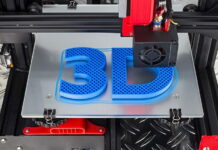Sustainability is not merely a passing trend; rather, it goes on to represent a transformative revolution across all business as well as industry sectors. It is well worth noting that it at present influences the choices and actions. Companies across various industries are very much looking out to seek innovative solutions so as to consistently decrease their impact on the environment.
By making the utmost use of artificial intelligence, one has the capability to automate processes and also transform the company into one that happens to be both sustainable as well as responsible.
The fact should not go unnoticed that AI is revolutionizing the fields of print design and also optimization. AI algorithms are such elements that can create customized designs by analyzing customer data and also preferences. These designs not just attract the target audience but, at the same time, help in minimizing waste. Artificial intelligence has in it to optimize the layout of printed pages, thereby resulting in reduced paper consumption as well as ensuring efficient use of every inch of paper.
Additionally, the utilization of AI-driven design helps in the development of sustainable packaging solutions. One goes on to design packaging that is environmentally friendly and also cost-effective by taking into account factors such as material consumption, efficiency when it comes to transportation, and recyclability.
One of the major hurdles that is faced by the printing and packaging industry is the significant amount of waste that gets generated, particularly by way of misprints as well as excess materials. AI-supported quality control systems have can go on to identify and also fix errors in real time, thereby resulting in a decrease when it comes to misprints and also material waste. Not only does this save resources, but at the same time, it goes on to lower the production costs well.
Furthermore, artificial intelligence builds the efficiency of material consumption by accurately calculating the exact quantity of ink, toner, or other consumables that are required for every printing task. By making sure of the efficient use of materials, printing operations can prominently reduce their total environmental impact.
AI also plays a major role when it comes to assisting with the option of sustainable printing materials as well as inks. AI algorithms may suggest greener choices by evaluating the environmental impact of various materials as well as ink options. This goes on to involve choosing recycled paper, biodegradable inks, and, at the same time, other sustainable alternatives.
The usage of predictive maintenance systems is also increasing in the printing industry. These systems go ahead and utilize data from sensors as well as machine learning algorithms to accurately forecast when printing equipment is going to face the hurdle of failure or if it requires any maintenance. Companies can go on to minimize downtime, lessen the energy consumption, and enhance the life of their printing equipment by way of anticipating as well as reacting to the maintenance needs.
It is well to be noted that the printing industry is experiencing a significant bent towards digital printing as well as on-demand production. Artificial intelligence plays a key role in this transformation, as it allows for the efficient as well as personalized manufacturing of printed products and goods. Digital printing is making short runs cost-effective while at the same time helping to reduce overproduction.
The fact is that the industry is becoming greener as well as more efficient with the introduction of designs that are AI driven, waste reduction plans, sustainable material preferences, predictive maintenance, and also digital transformation. The printing industry is being empowered by artificial intelligence so as to effectively address the increasing challenges that are presented by society and politics. There are, of course, alternative solutions available to shape as well as facilitate the turnaround process. Artificial intelligence algorithms go on to play a crucial role in driving change as well as facilitating the acceleration of processes when it comes to achieving goals.




























